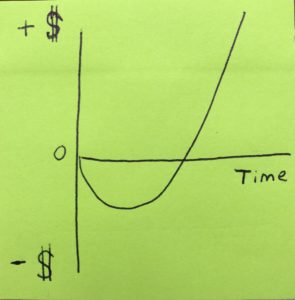
Freedom on Display
Certain words easily evoke mental imagery. “Freedom” is one of those words. Several pictures come to mind right away: 4th of July fireworks, broken chains, Tom Petty. But the freedom-est image I’ve ever seen might be a sideways shopping cart.
I was buying groceries recently. (You’re likely thinking I’m the type of person who grows his own food—that’s a myth I’ve been fighting for years. I wear overalls for the convenience, not because I farm.)
I passed an aisle where an older lady had her shopping cart perpendicular to the aisle. Normally shoppers have their carts in line with the aisle, walking down the aisle and grabbing items as needed.
If you turn your cart sideways, or perpendicular to the aisle, people can’t get around you. You have become a transformer—transforming from shopper to obstacle. If your life goals include making as many enemies as possible, being a perpendicular person is a good strategy.
Predictably, a blockage formed. Behind the woman, five people couldn’t get out of the aisle. She blocked one way, and shoppers entering the aisle blocked the other.
I stood off to the side and watched. I found her display more interesting than the ice cream display (and I love the ice cream display).
The woman seemed totally unbothered by blocking these people. She took her time getting her items. It seemed like it took her an eternity finish collecting everything, but it probably only took 15-20 seconds.
The display fascinated me because I don’t think I could do that. I don’t think I could live the perpendicular life. I’m a parallel guy. I care too much about what other people think about me.
There have been times where I’m in an aisle, the aisle gets crowded, and I leave without getting my item because I’m so concerned about blocking people. My concern shifts from shopping to worrying that I resemble arterial plaque.
To me, that woman’s feat was as impressive as a 9.7 second 100-meter dash, a 400-pound bench press, or declining free dessert. All of those things are difficult and rare.
Imagine being that free from caring about what other people think. I’m not advocating blocking people in an aisle on purpose, or deciding to only wear sweatpants from now on. I’m just saying, what would it be like to function free of the perceived expectations of other people? Probably pretty liberating.
Kudos to you ma’am. I hope others are able to achieve your level of freedom.



